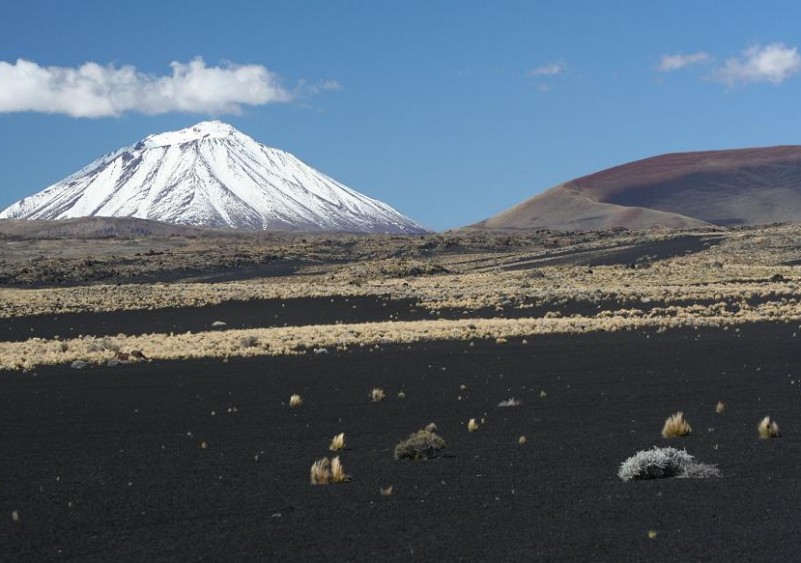FLORA
In the department there can be identified two plant formations: the steppe (in the east of Malargüe) and the mountains formations (in the west), which occupy the different ranges of the mountains and the Payunia highest summits.
Among the species that can be found in Malargüe there are jarilla, solupe, molle, colimamil, romerillo, vidriera, coirón, etc.; there predominate shrubs. Most of the Malargüe trees represent introduced species that have been cultivated by man, such as the poplar.
FAUNA
The department has two major fauna reservations: Payunia and Llancanelo.
*Reserva Provincial La Payunia
It houses guanacos (about 12,000 specimens, the largest population in the province), gray foxes, chinchillones de la sierra, ñandúes petisos, maras, red foxes, gatos pajareros, and piches among others. There are also lagartos cola de piche and lagartos de escorial.
*Reserva Faunística Laguna de Llancanelo.
We can find prominent species, including some 130 bird species (flamingos, white geese, black-necked swans, coscoroba swan, macaes pelada, herons, aptos, teros reales, witch herons, peuquenes, gallaretas, chorlos, jotes, storks and others). There are mammals, such as coipos, guinea pigs, foxes and vizcachas as well.
HYDROGRAPHY
Rivers of Malargüe: The Malargüe department has a rich hydrography. To begin with, some of its limits are determined by the Rio Colorado (formed from the confluence of the Rios Grande and Barrancas, which are born in the mountains) and the Atuel that, despite being born in the department, is not used in this territory.
River Malargüe:
It is born in the homonym lake; it receives water from several streams, including Chacal, Alamillo, Mocho, Malo and Negro. It irrigates small extensions through the distribution of the water from the Malargüe diverting dam. This river is very deep; it runs through 75 km. and flows to the Llancanelo lake. Its waters are salty and in it there is the practice of pejerreyes and trout fishing. It is also used to produce energy in the Arroyo Minas and Castillos de Pincheira areas.
Laguna Llancanelo:
It is one of the most important wetlands in Cuyo; it is famous for the animal and plant species that live there and the tourist attractions offered.
Dike “Blas Brísoli”:
Diverting dam which includes the Rio Malargüe, located 12 km from the city.






